-
LiveAgent
1
HubSpot chatbot review
Getting started with the HubSpot chatbot feature HubSpot is a customer relationship management (CRM) platform and marketing, sales, and customer service software. It provides tools…HubSpot chatbot review4.412789 reviews4Editor's overall Rating -
LiveAgent
2
Quriobot chatbot review
Getting started with the Quriobot feature Quriobot is a popular chatbot software tool with features allowing the use of chatbots on websites. In addition to…Quriobot chatbot review4.215 reviews3.5![Daniel Pison]() Editor's overall Rating
Editor's overall Rating -
LiveAgent
3
Tidio chatbot review
Getting started with the Tidio chatbot feature Tidio is a popular, extensive customer support software with a toolset that focuses on ticketing, social media, and…Tidio chatbot review4.71827 reviews4.8![Jana Kostelanska]() Editor's overall Rating
Editor's overall Rating -
LiveAgent
4
Microsoft bot review (Azure Bot Service)
Getting started with the Microsoft bot feature Microsoft Azure Chatbot is a cloud-based chatbot development platform developed by Microsoft. It is part of the Azure…Microsoft bot review (Azure Bot Service)4.61333 reviews4Editor's overall Rating -
LiveAgent
5
Amazon Lex chatbot review
Getting started with the Amazon Lex chatbot feature The Amazon Lex service is an Amazon Web Services (AWS) tool that makes it easy for you…Amazon Lex chatbot review4.239 reviews4Editor's overall Rating -
LiveAgent
6
IBM Watson Assistant review
Getting started with the IBM Watson Assistant feature The IBM Watson AI Assistant chatbot software can understand your requests, adapt to your domain, recognize plain-language…IBM Watson Assistant review4.1264 reviews4![Daniel Pison]() Editor's overall Rating
Editor's overall Rating -
LiveAgent
7
Zendesk bot Review
Getting started with the Zendesk chatbot feature To get started with Zendesk’s chatbots, I headed to their website and clicked on the “Free Trial” button.…Zendesk bot Review4.48780 reviews3.3![Daniel Pison]() Editor's overall Rating
Editor's overall Rating -
LiveAgent
8
Manychat bot review
Getting started with the Manychat bot feature Manychat is a chatbot building platform designed to create interactive chatbots in Instagram Direct Messages, Facebook Messenger, and…Manychat bot review4.6133 reviews4.7![Daniel Pison]() Editor's overall Rating
Editor's overall Rating -
LiveAgent
9
Dialogflow chatbot review
Getting started with the Dialogflow chatbot feature Dialogflow is a virtual agent provided by Google that handles concurrent conversations with your customers. Human language is…Dialogflow chatbot review4.264 reviews3.3![Daniel Pison]() Editor's overall Rating
Editor's overall Rating -
LiveAgent
10
Drift chatbot review
Getting started with the Drift chatbot feature The Drift chatbot solution allows businesses to engage with their website visitors in real-time, using conversational AI to…Drift chatbot review4.41027 reviews3.3![Daniel Pison]() Editor's overall Rating
Editor's overall Rating -
LiveAgent
11
Freshchat chatbot review
Getting started with the Freshchat chatbot feature Freshchat is a cloud-based customer messaging platform for businesses to engage with their customers in real time through…Freshchat chatbot review4.2461 reviews4![Daniel Pison]() Editor's overall Rating
Editor's overall Rating -
LiveAgent
12
Intercom chatbot review
Getting started with the Intercom chatbot feature Intercom chatbot is a software solution that is designed for customer support and chatbot services. It allows businesses…Intercom chatbot review4.43470 reviews4![Daniel Pison]() Editor's overall Rating
Editor's overall Rating -
LiveAgent
13
Chatfuel Chatbot review
Getting started with the Chatfuel Chatbot feature Chatfuel is a user-friendly chatbot-building platform for businesses and individuals. With Chatfuel, you can set up chatbots for…Chatfuel Chatbot review4.493 reviews3.7![Daniel Pison]() Editor's overall Rating
Editor's overall Rating
Chatbot reviews
The chatbot reviews are based on an evaluation of these key factors:
- Ease of use: How difficult is it to set up? Is it user-friendly, or does it require a certain technical knowledge? What is the extent of customization of each chatbot? How easily can you set up a conversational interface and customize the chatbot to fit your business’s needs?
- Implementation: How difficult is it to plan chatbot workflow, and to what degree can you plan the conversations between chatbot and customer? Does it integrate with other systems or chat platforms?
- Performance: How well does the chatbot understand and respond to user inquiries? Are the responses provided by the chatbot accurate and correct?
- Price: What is the price of implementation of a certain chatbot? How does the monthly price compare to the competitors? What features are included in the price?
You may also consider the industry and the planned use of the chatbot for your business because they may offer different features and capabilities.
However, while reviewing different chatbots, you should note that the performance highly depends on how well you manage to set it up. How you configure the chatbot’s advanced features will impact its overall performance.
What is the purpose of chatbots?
Chatbot’s main purpose is to simulate a conversation with website visitors over the internet. They can be used for many different purposes, such as answering user questions, providing customer service, assisting with online transactions, and more. The specific use for a chatbot is determined by the needs and goals of the business, and it depends on its implementation, customization, and design. Some simple chatbots can be designed to serve as general-purpose assistants, while others can be built for a variety of specific tasks.
How do chatbots work?
AI-powered chatbots are computer programs or software that act like actual customer service agents. They can have fluent conversational flows with customers and web visitors and are programmed to use artificial intelligence (AI) and machine learning (ML) to interpret human language (written or spoken) and respond. The more data the chatbot has to learn from, the more human-like the responses become.
For example, a chatbot can be used on websites to answer questions about products or services. Nowadays, powerful chatbots use natural language understanding (NLU) to determine the user’s needs. When someone asks a question, the chatbot identifies the intent behind that question, looks for the most appropriate answer, and sends a response back to the questioner.
Chatbots can be helpful virtual agents because they work 24/7 customer service shifts and answer basic customer inquiries quickly, which helps improve work efficiency. However, they are only computer software that is not as advanced as humans, and sometimes they do not understand what a person is asking or might not have the correct answer.
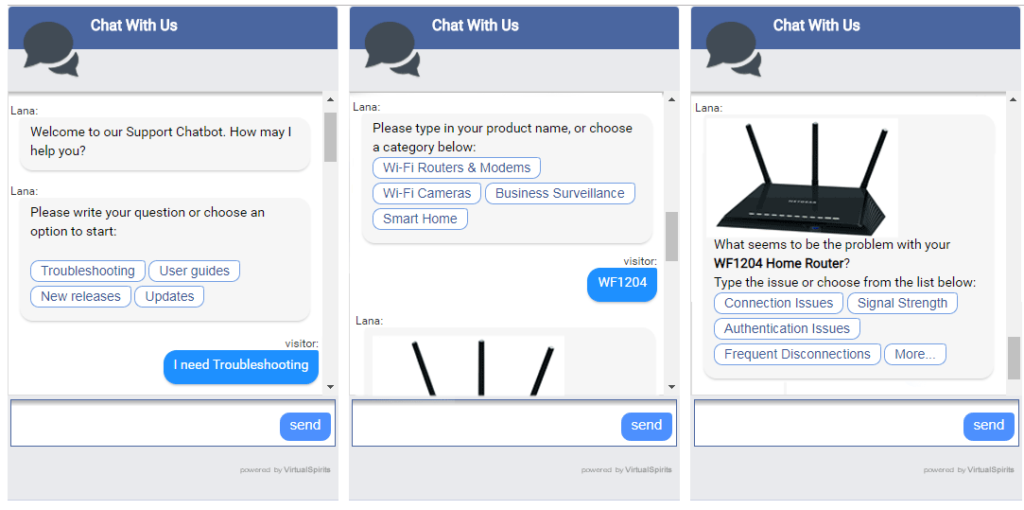
What are some common features of chatbots?
Natural language processing (NLP)
NLP or natural language processing is a branch of computer science. In the context of AI-powered chatbots, NLP is an artificial intelligence software that enables chatbots to understand and process human language (written or spoken) to respond to user questions in a meaningful way.
Automated responses
Automated responses are pre-written answers that chatbots use to respond to users. They are based on keywords and patterns gathered from the user’s input. They can be effective in answering common questions. However, they can make the chatbot seem less human-like. Virtual agents provide automated responses to user queries, which can help to improve work efficiency, automate menial administrative tasks and reduce the workload for customer service agents.
Personalization
Some chatbots can use customer data to understand human behavior on an individual level. Factors such as browsing preferences or past purchases can help chatbots to deliver more personalized customer service and recommendations. Personalization is crucial for creating a great customer experience and meeting the needs of each customer. However, as personalization becomes more common, customer expectations get more difficult to achieve.
Integration with other systems
Chatbot integration can have a huge impact on its usability. Chatbots can be integrated with a variety of systems and applications, such as CRM systems, emails, e-commerce platforms, or social media channels. By connecting a chatbot to your company’s internal systems, chatbots can do much more independently. When a chatbot gets access to your back-end and user-related data, it can help your customers with their specific cases instead of giving basic and generic instructions.
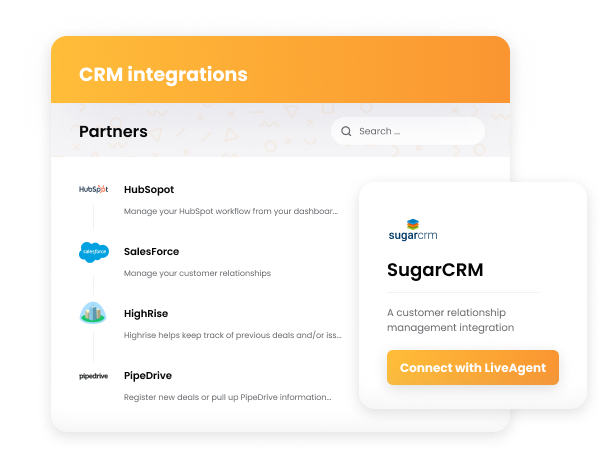
Machine learning
Machine learning is the use of complex algorithms to get insights from patterns in data. They can be used to improve the chatbot’s abilities to make it seem more human-like. Using machine learning, you can deliver a more personalized customer experience because the chatbot will analyze user interactions to provide targeted recommendations. Chatbots that use machine learning can gather data about your customers and target audience without the use of cookies.
Multilingual support
Multilingual virtual agents use artificial intelligence (AI) to answer questions or perform a variety of tasks in the customer’s preferred language. These chatbots have capabilities to detect a language which helps to provide multilingual support to users and customers all over the world. This highly increases the scalability of your business and improves user experience. Multilingual chatbots can also help cut costs because they are cheaper solutions than expanding your helpdesk team by including multilingual customer service agents.
Analytics and Reporting
Every customer-centric business knows that analyzing client interactions and behavior is the key to building exceptional customer experiences. Chatbots are great at providing detailed statistics and insights that can prove invaluable in developing a successful business strategy. These analytics are real-time data a chatbot generates through interactions with your website visitors.
Every time your chatbot interacts with a customer, it gathers information like the chat volume, conversation length, bounce rate, user satisfaction, average response time, and other important information. All of this data is crucial in measuring the chatbot’s performance. It also can be used to maximize the potential and effectiveness it can bring to your business. Furthermore, your sales and marketing teams can use this information to understand your customers’ needs, improve their experience, boost sales, improve work efficiency, and much more.
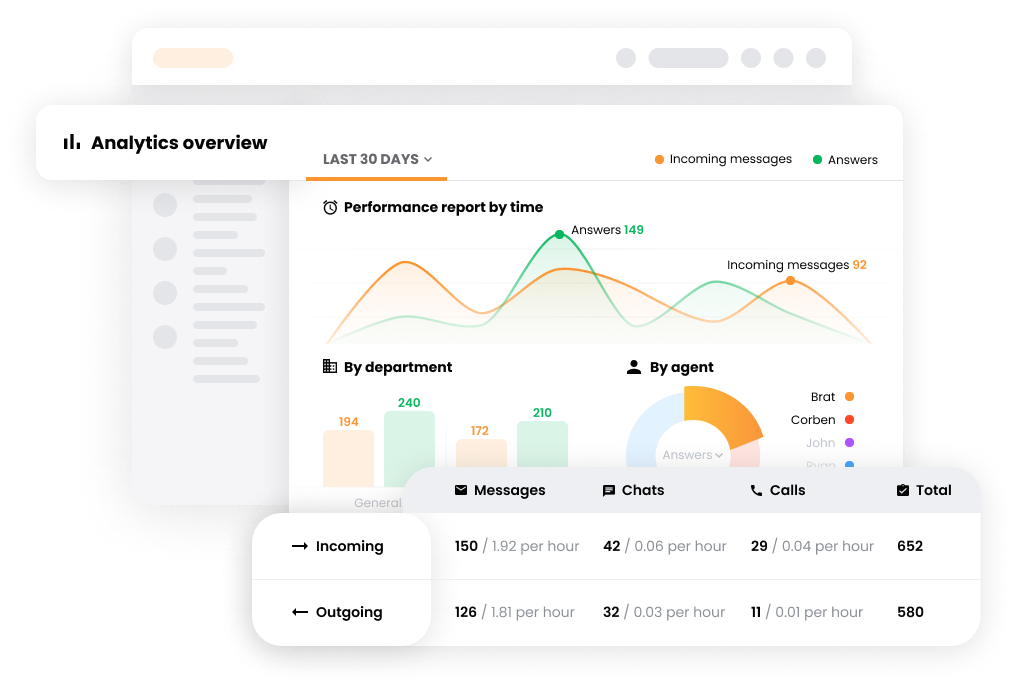
What are the advantages of chatbots?
Time and resource savings
Chatbots can handle an unlimited number of inquiries at once. It allows your helpdesk team to focus on more complex and key tasks. These AI-powered chatbots ensure that your business can manage a large volume of chats during peak hours without hiring more customer service agents.
Improved customer service
Compared to customer support agents that can only focus on one customer inquiry at a time, chatbots can simultaneously provide thousands of immediate responses.
Another factor that can improve customer service and customer experience is that chatbots can communicate in multiple languages. This lets you tap into new markets while keeping costs low.
Chatbots can also be integrated with other systems and platforms. It provides an effortless omnichannel experience that gives customers the option to communicate through their preferred chat platforms.
Availability
Chatbots are available 24/7, assisting customers at any hour of the day or night. They also respond quickly, which maintains smooth communication between the business and the customer. The customer can ask any questions and get an instant reply without having to wait for the next available agent.
Customization and scalability
Businesses are growing, and therefore more traffic to their websites. Having scalable customer support will enable the contact center to handle a high traffic volume. Instead of investing in hiring more customer service agents, businesses can use time-efficient chatbots that can handle many inquiries at once.
Chatbots also offer personalized touches and interactive one-on-one experiences based on individual customer responses.
Cost-effectiveness
Cost saving is another essential advantage of using a chatbot. Even though the implementation of chatbots requires an investment, it is still lower compared to traditional customer service costs, which include manpower, salaries, and training.
Data gathering and analysis
Chatbots are a great tool to track and collect client data, purchasing patterns, and analyze customer behavior.
You can also collect feedback through simple questions and customer satisfaction surveys. This will help to improve your services and products and optimize your website for a better customer experience.
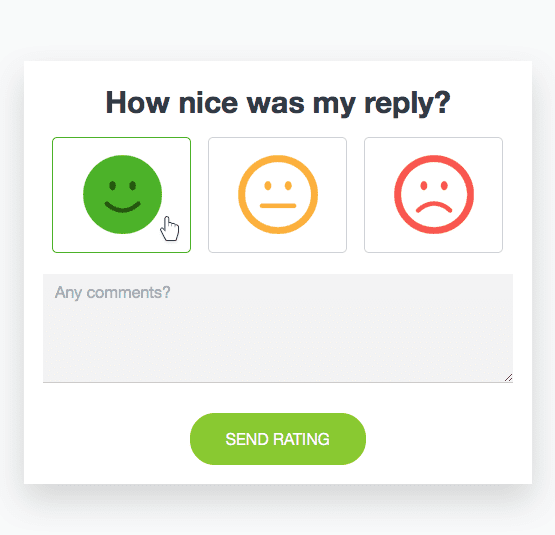
Using chatbot analytics can help you see how the chatbot performs and show insights into how the visitors engage with your business.
What are the disadvantages of chatbots?
Limited understanding
Even with their natural language processing, chatbots can’t fully understand customers’ input and emotions. It means that they can provide answers that are not always 100% correct or appropriate, which can lead to frustration.
Reduced personalization
Chatbots can’t adapt their responses to individual users in the same way that a human agent can, so the conversation may feel less personal or engaging.
To deliver a high-quality experience, chatbots need personalization. If they are heavily scripted and give the same answer to different questions, it can lead to decreased productivity and damage your business’s reputation. Storing customers’ previous purchases and actions can help build a profile which will help the chatbot to recommend products that are interesting for the user.
Potential for errors
Chatbots need constant maintenance, optimization, and revisions to work properly. You need to upgrade their knowledge base with new data so they can effectively answer customer questions. You also need to keep in mind that whenever you are making changes in your company, you have to change the bot’s answers accordingly to avoid any mistakes and incorrect responses.
Chatbots are prone to making errors when visitors ask questions that are not in their database. It makes them unable to respond or sends them in loops. These errors can become frustrating for customers.
Ethical concerns
There are some ethical concerns about using artificial intelligence and chatbots. Nowadays, the world is becoming more and more dependent on technology in a variety of industries. While technology improves efficiency and cuts costs, it can also have a huge impact on unemployment. This is because chatbots and AI can automate tasks that were previously performed by humans.
One of the industries that may be affected the most is customer service. Chatbots are already frequently used to communicate with customers and handle customer inquiries. As these technologies become more advanced, they may be able to handle more complex tasks, which can lead to workers losing their job.
Limited scope
The disadvantage is that bots can only perform a set of functionalities and simply can’t do anything outside their scope. Chatbots were created to respond to simple, well-defined questions. It means they may not be able to handle more complex customer complaint situations or questions requiring a decision. Their limited scope is why chatbots are not meant to be a complete replacement for customer service agents.
How can chatbots be used in business?
Chatbots are computer programs that can be used in a variety of industries to help with key tasks like customer service, online shopping, collecting customer data, giving product recommendations, and more. Companies use chatbots to save resources and time and to help deliver quick customer support.
Here are some examples of how you can use chatbots in your business:
Customer service
Customer support chatbots provide 24/7 assistance to clients. They can tap into the company’s knowledge base to answer basic questions and inquiries. By doing this, they automate tasks otherwise handled by support agents, leaving them with more time to focus on complex issues. Customer service bots can handle customer complaints and problems related to products or services, explain technical issues, and more. In more complex cases, they can gather customer information such as name, order number, and type of issue. They can forward this data to agents for analysis.
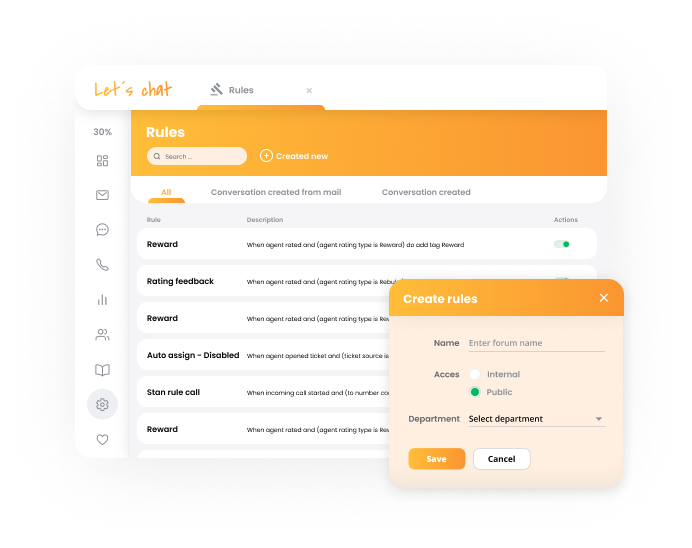
Marketing and sales
Chatbots are becoming a powerful marketing tool for many businesses. They help improve customer engagement with their conversational capabilities. Using chatbots for marketing and sales allows companies to engage with leads 24/7 without needing the sales and marketing team to be online. Chatbots can perform proactive sales by engaging with your website visitors and making product recommendations based on what they viewed on the website or what they have in their shopping cart. They can also help your business achieve higher engagement with potential customers.
Human resources
HR departments can use chatbots as virtual assistants to help automate HR operations like collecting resumes, tracking applications, scheduling interviews, recruitment process, onboarding, or collecting feedback from employees. HR chatbots can be trained to communicate with employees and analyze information. They can even suggest solutions to improve the work life within the organization.
Banking and Finance
Bots can be used for a wide range of banking activities and financial services, such as managing customer accounts, processing transactions, providing account details, balance information, and so on.
They can also serve as virtual financial advisors. They can keep track of clients’ spending habits, set payment reminders, or keep track of incoming and outcoming transactions.
Chatbots can detect suspicious activities and notify customers in the event of a hacked bank account.
Many financial institutions use chatbots to automate everyday administrative tasks such as handling customer complaints, answering basic queries, offering advice regarding investments, and much more.
Conclusion
Chatbots are gradually becoming popular for many businesses in different industries because they are time-efficient and cost-effective for everyday tasks. However, they are not able to fully replace all the capabilities of a human agent as they can’t handle more complex requests and lack empathetic personal touch.
You should always consider your customers and their preferences and give them the option to connect with human representatives if they choose. By doing so, you can improve the overall customer experience and satisfaction.
Chatbots come with many advantages that can help your business grow, attract more customers, make work more efficient for your employees and generate revenue. However, as with every piece of technology, they also come with some disadvantages that you need to take into account when you are considering implementing chatbots into your business strategy.
You will be
in Good Hands!
Join our community of happy clients and provide excellent customer support with LiveAgent.

Our website uses cookies. By continuing we assume your permission to deploy cookies as detailed in our privacy and cookies policy.

- How to achieve your business goals with LiveAgent
- Tour of the LiveAgent so you can get an idea of how it works
- Answers to any questions you may have about LiveAgent

 Български
Български  Čeština
Čeština  Dansk
Dansk  Deutsch
Deutsch  Eesti
Eesti  Español
Español  Français
Français  Ελληνικα
Ελληνικα  Hrvatski
Hrvatski  Italiano
Italiano  Latviešu
Latviešu  Lietuviškai
Lietuviškai  Magyar
Magyar  Nederlands
Nederlands  Norsk bokmål
Norsk bokmål  Polski
Polski  Română
Română  Русский
Русский  Slovenčina
Slovenčina  Slovenščina
Slovenščina  简体中文
简体中文  Tagalog
Tagalog  Tiếng Việt
Tiếng Việt  العربية
العربية  Português
Português 





